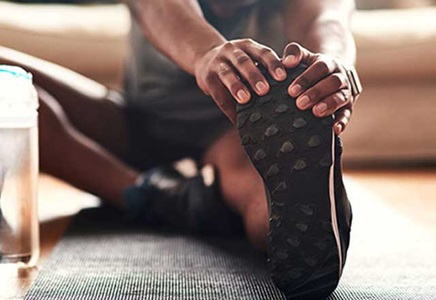Sports Injuries
Overview
Most sports injuries are due to either trauma or overuse of muscles or joints. The majority are caused by minor trauma involving muscles, ligaments, tendons, or bones, including:
-
Contusions (bruises)
-
Sprains
-
Strains
-
Fractures
-
Dislocations
What is a contusion?
A contusion (bruise) is an injury to the soft tissue. It is often caused by blunt force such as a kick, fall, or blow. The immediate result will be pain, swelling, and discoloration.
What is a sprain?
A sprain is a stretch or tear of a ligament. Ligaments are flexible bands of fibrous tissue that connect bones to bones, and bones to cartilage. They also hold together the bones in your joints. Sprains often affect the ankles, knees, or wrists.
Learn more about ligament injuries to the knee.
What is a strain?
A strain is twisting, pull or tear of a muscle or tendon, and is often caused by overuse, force, or stretching. A tendon is a tough cord of tissue that connects muscles to bones.
Read more about sprains and strains in children.
Some examples of strains are:
-
Tennis elbow (lateral epicondylitis). Lateral epicondylitis, also known as tennis elbow, is characterized by pain in the backside of the elbow and forearm, along the thumb side when the arm is alongside the body with the thumb turned away. The pain is caused by damage to the tendons that bend the wrist backward away from the palm.
-
Golfer's or baseball elbow (medial epicondylitis). Medial epicondylitis, also known as golfer's elbow, is characterized by pain from the elbow to the wrist on the palm side of the forearm. The pain is caused by damage to the tendons that bend the wrist toward the palm.
-
Lumbar strain. A lumbar strain is an injury to the lower back, which results in damaged tendons and muscles that spasm and feel sore. Trauma of great force can injure the tendons and muscles in the lower back. Pushing and pulling sports, such as weight lifting or football, can lead to a lumbar strain. In addition, sports that need sudden twisting of the lower back, such as basketball, baseball, and golf can lead to this injury.
-
Jumper's knee. Jumper's knee, also known as patellar tendonitis, is a condition characterized by inflammation of the patellar tendon, which connects the kneecap to shin bone (tibia). The condition may be caused by overuse of the knee joint, such as frequent jumping on hard surfaces.
-
Runner's knee. Runner's knee, also known as patellofemoral stress syndrome, is when the patella, or kneecap, does not move well in the groove of the femur (thigh bone). Runner's knee may be caused by a structural defect, or a certain way of walking or running.
What is a fracture?
Fractures are breaks in the bone that are often caused by a blow or a fall. A fracture can range from a simple hairline fracture (a thin fracture that may not run through the entire bone) to a compound fracture, in which the broken bone protrudes through the skin. Most fractures happen in the arms and legs.
Stress fractures are weak spots or small cracks in the bone caused by continuous overuse. Stress fractures often happen in the foot or leg after training for gymnastics, running, and other sports. The bones in the midfoot (metatarsals) in runners are especially vulnerable to stress fractures.
What is a dislocation?
A dislocation happens when extreme force is put on a ligament, allowing the ends of two connected bones to separate. Stress on joint ligaments can lead to dislocation of the joint.
Seminar Common Sports and Activity Related Injuries: What to Consider from Pain to Breaks

Rehabilitation for sports injuries
A rehabilitation program for sports injuries is designed to meet the needs of the individual patient, depending on the type and severity of the injury. Active involvement of the patient and family is vital to the success of the program.
The goal of rehabilitation after an amputation is to help the patient return to the highest level of function and independence possible, while improving the overall quality of life--physically, emotionally, and socially.
In order to help reach these goals, sports injury rehabilitation programs may include the following:
-
Activity restrictions
-
Physical or occupational therapy
-
Exercise programs to stretch and strengthen the area
-
Conditioning exercises to help prevent further injury
-
Heat or cold applications and whirlpool treatments
-
Applications of braces, splints, or casts to immobilize the area
-
Use of crutches or wheelchairs
-
Pain management techniques
-
Patient and family education
The sports injury rehabilitation team
Rehabilitation programs for sports injuries are usually conducted on an outpatient basis. Many skilled professionals are part of the sports injury rehabilitation team, including any or all of the following:
-
Orthopedist/orthopedic surgeon
-
Physiatrist
-
Physical therapist
-
Occupational therapist
-
Exercise physiologist
-
Sports medicine specialist
-
Athletic trainer

